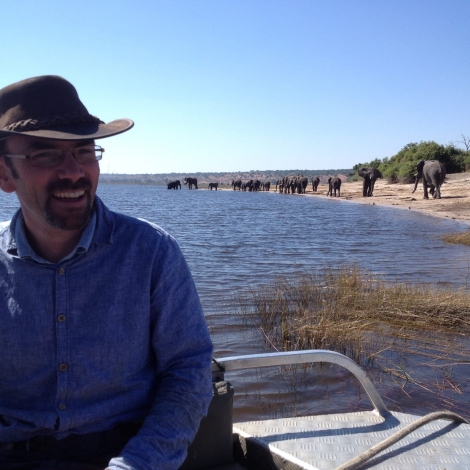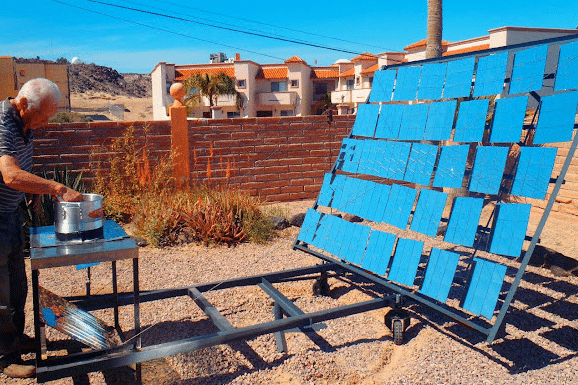There is a secret to building a technology in a rural community so that it successfully scales up and remains sustainable in the long term. It’s “context, context, context,” according to the experts at the Rural Water Supply Network. That word, repeated three times, is in the introduction to the decision support tool, the Technology Applicability Framework. Sean Furey, Director of the RWSN Secretariat and a water and sanitation specialist at Skat Consulting Ltd, has recently completed an update of TAF. Mr. Furey has seen some spectacular failures and important successes in the implementation of water and sanitation technologies in rural communities. We asked him five questions.
[For more on TAF, please see How to Improve the Adoption of Innovative Technology in Developing Countries.]
E4C: What are some examples of the kinds of problems that the Technology Applicability Framework has solved or avoided?
SF: The TAF has been on a variety of WASH, and energy, technologies in Africa, Latin America and Asia. One example is when the German government’s development agency, GIZ, used the TAF in Afghanistan. They wanted to assess the scaling-up potential of a sanitation treatment technology in Kabul. The TAF assessment allowed them to conclude there was significant potential for scaling-up and it helped them to identify the potential bottle-necks (mainly institutional and legal) which could trip them up along the way.
E4C: You recently updated the TAF. What prompted the update?
SF: The TAF was developed by the WASHTech project between 2011 and 2013 to address the problem that too many great ideas fall into the Valley of Death and never emerge, while some really poor ideas, such as the notorious PlayPump, get a lot of funding and support for a while until it is realised that it is a flawed concept or that just because a technology working in Nicaragua doesn’t mean that it is going to be successful in Niger or Tajikistan. The TAF has been popular and we had some great examples presented at the 7th RWSN Forum in Cote d’Ivoire in 2016. So firstly I had a bit of time last year to be able to go through these experiences and contact TAF users and get their feedback on what they like about it and what could be improved. Secondly, while the TAF is an open-source tool that anyone can use, providing on-going support and visibility does have a cost so I am looking for partners to help us take the TAF to the next level and re-build the online knowledge hub so that it continues to provide value, not just for WASH sector but across the scope of engineering and technology for improving the lives and livelihoods of the world’s poorest.
E4C: What are some of the important changes?
SF: Everyone likes the TAF grid which shows 18 traffic light scores for six sustainability dimensions across three different perspectives: user/buyer; producer/provider; regulator/investor. However some people wanted to a simpler version; the TAF is a participatory workshop tool that is used with stakeholders over a couple of days, however, sometimes it is useful to have a screening tool to assess the potential value of a technology in a more generic sense. So we developed a second ‘mode’ of use for the TAF – the TAF “Expert Panel” which is suitable for organisations who are running competitions and challenges for new ideas for reaching development goals. It’s still early days, but my colleague and I used it recently to support a technology-challenge assessment for a Swiss NGO.
E4C: Is the recent trend toward deploying monitoring devices paying off in better access to clean water and sanitation?
SF: The emphasis on monitoring and data over the last 5-6 years has been very welcome. Decisions in rural water supply policy and practice have been too driven by anecdote and direct experience for too long; we need a much solid evidence-based approach. There was an initial hype around water point mapping technologies and apps, but today the conversation has matured to having much more focus on the quality of data and how it is used to driven decisions and improve services. Real-time monitoring, in particular, is showing real promise in improving the quality of rural water supply services and reducing downtimes significantly. The big challenge that remains is around life-cycle financing, because the available financial data is still poor and the behavioural economics of rural water supply is a complex, wicked problem.
It is important to consider the role technology and innovation as just part of the wider system of WASH services (more on that at devex.com: Why You Should Care About Systems in WASH), and in the past there has been too much emphasis on a single new product or activity delivering transformative results – instead what generally seems to happen is that one problem is solved and two more are created. What we are seeing with coalitions like Agenda for Change is a push to have a much more systematic and smart approach to WASH service delivery.
E4C: Are you optimistic that we will meet SDG 6, universal access to safe and affordable drinking water and adequate sanitation by 2030?
SF: The direction of travel is good in SDG6, and there will be successes, but there will also be failures because of political instability, corruption, conflicts and climate change. The current trend towards nationalistic authoritarianism is particularly worrying and undermines so much of positive cooperation and collaboration that underpins the Sustainable Development Goals. Somehow we need to work together to shift the political and media narrative back towards the idea of cooperation and exchange being better for everyone than conflict and war.

